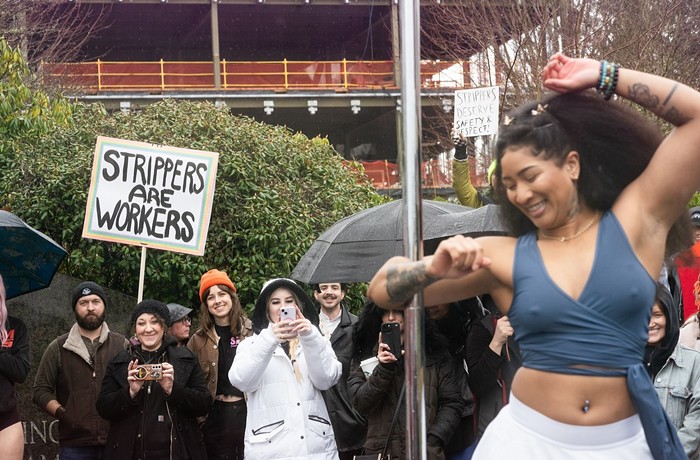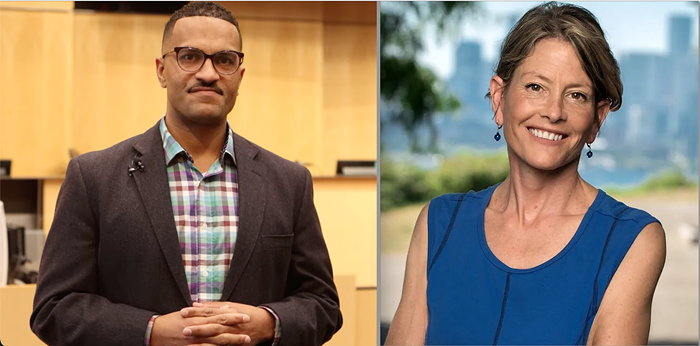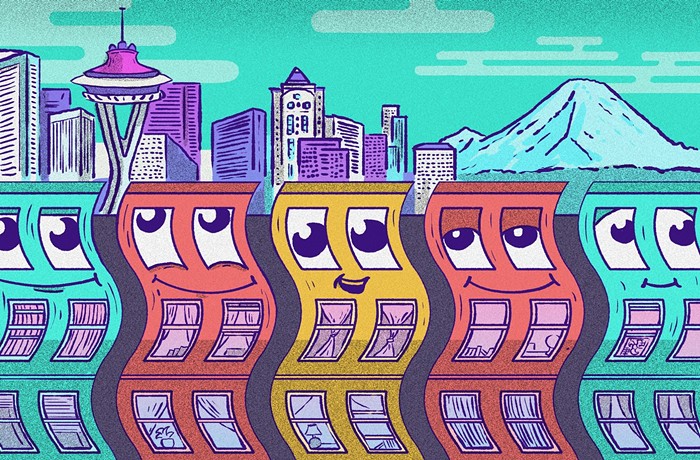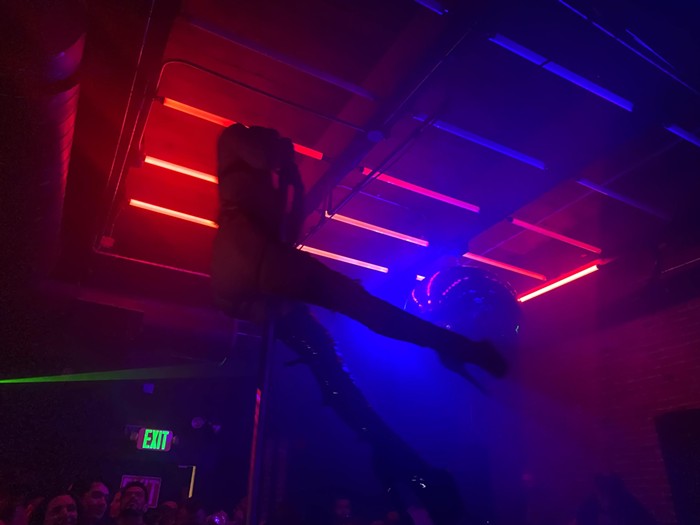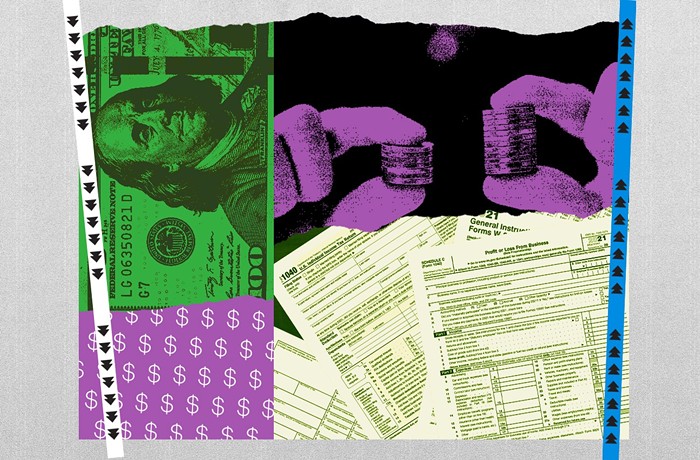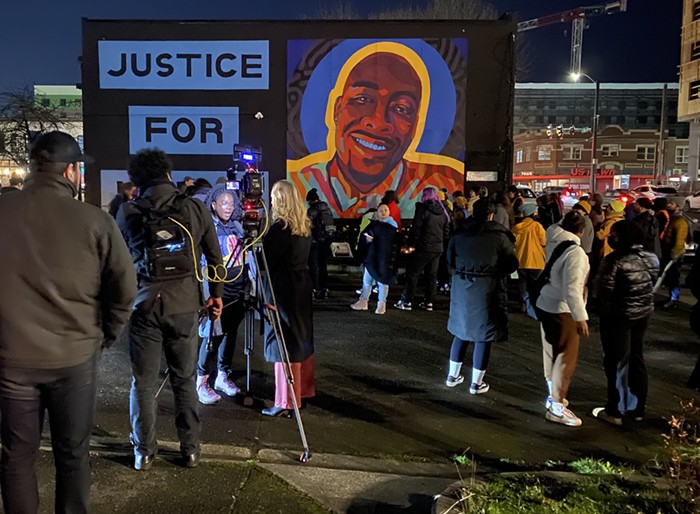On the night of December 8, a band of 15 protesters marched two blocks, from Niketown to Westlake Park in downtown Seattle. One man's cardboard sign read "Shut It Down," and some protesters said they were out to draw attention to the "intersectionality of capitalism and racism."
When the group arrived at Westlake, a man wearing a Seahawks jacket and an orange cap approached them, joking with police officers as he did so, and began taking photographs of the protesters. Was he a cop? If so, he would presumably be familiar with Seattle Police Department policy, which reads: "If demonstrators are not acting unlawfully, police can't photograph them."
There's a reason for this regulation. In 1979, Seattle became the first city in the country to pass a "police intelligence ordinance" that prohibits information-gathering on law-abiding political protesters. "The law was designed to put a stop to the Seattle Police Department's practice of building files on people who had not been charged with any crimes," according to the Seattle Times.
But the man in the orange cap kept snapping photos, walking closer to the demonstrators with a uniformed police officer alongside him. The protesters were not told they were doing anything illegal until more than three minutes later, when SPD announced through a speaker that they needed to clear the intersection. The protesters promptly cleared out.
At first, the man in the orange cap refused to identify himself, even when I told him I was a reporter and asked if he was with the police. Under persistent questioning, however, he finally admitted to being an SPD "senior photographer."
I asked the man if there were any rules he needed to follow around taking photos of protesters' faces. "No," he answered. "They're in the public domain."
He said he was "just documenting the scene."
Sean Whitcomb, spokesperson for the SPD, admits that when police photograph lawful protesters, it creates "fear of some sort of retaliation or retribution." But, he said, referring to the department's rule against photographing lawful demonstrators: "Perhaps our policy isn't as clear as it could be." Under that same 1979 intelligence ordinance, when SPD suspects a peaceful protest may "devolve into criminal activity," Whitcomb said, it can photograph demonstrators preemptively.
If the suspicions are not borne out, the information is deleted "reasonably immediately," he said. An auditor reviews that process twice yearly. Since the December 8 Westlake Park protest was peaceful, he said, "those pictures are purged."
Beyond taking photographs of protesters, a range of tactics employed by SPD have come under scrutiny during Seattle's marches against police brutality—which have come almost nightly since a Missouri grand jury declined to indict Ferguson police officer Darren Wilson for the killing of Mike Brown, an unarmed black teenager. The Public Defender Association, a downtown law firm, says it's exploring whether SPD has "violated protester rights" through the use of riot gear and attempts to limit protesters' "freedom to walk the streets."
On December 4, a group of perhaps 20 protesters gathered at the University Village shopping mall to hold what they called a "requiem for Mike Brown." They were vastly outnumbered by police. SPD personnel, including officers in riot gear, had arrived ahead of them, even though organizers said they chose not to advertise the event on social media—in order to avoid attracting a large police presence.
The protesters marched peacefully through the mall for two hours, singing solemnly: "Whose side are you on? Justice for Mike Brown is justice for all."
Claire Sullivan, a University of Washington law student, said she noticed a middle-aged man trying to discreetly take photos of her and two young women of color who organized the march. She said when they asked the man for his name and badge number, presuming he was a police officer, he pivoted and "sprinted" away without saying anything.
Another protester pointed to two men in puffy jackets standing in the cold in the middle of the parking lot and said, "Those guys are definitely informants." When I identified myself as a reporter to the men and kindly asked who they were, one said sneeringly, "Well, I'm a reporter for the New York Times." Without warning, he lifted up his cell phone and took my photo with it.
When I told him I was going to take his photo, he turned and took off walking across the parking lot. The other man pushed into me with his elbow jutting out, trying to prevent me from getting a clean picture (and, claimed, buffoonishly, "You're running into me!"). Then he followed the first man and disappeared into an Eddie Bauer store.
"I think it causes people who want to exercise their rights to be on edge," said Nikkita Oliver, another UW law student and protest organizer, when asked about the men and the possible presence of police who won't identify themselves as such. She said it causes "distrust of the police."
Whitcomb, SPD's spokesperson, refused to confirm or deny that the men were police. "Cover blown is a big deal," he said.
Mike O'Dell, another demonstrator, e-mailed me with photos and videos of two men he said he was "sure were cops" near a protest on December 7. One backed into him, he said, to stop him from getting a clear photo of the other man.
"From their perspective, sure, I see a justification for it," O'Dell said. "They don't want mass uprising. They don't want a massive street movement... But from a civil-liberties perspective, there's no justification for it."
"The last thing we want to do," SPD spokesperson Whitcomb said in an interview, "is make people feel uncomfortable about using their free-speech rights." He said police officers in "plainclothes" often closely observe major protests. They are not supposed to assume a fake persona unless they are specially trained and are carrying out a specific criminal investigation—because doing so would put them into a more select category of "undercover" officers.
For the past two years, through its own blog and the media, SPD has openly "marketed"—to use Whitcomb's term—to Seahawks fans that plainclothes officers would be wearing jerseys and be present at games, watching out for criminal activity. He says he wants demonstrators to know that SPD does the same kind of thing during major protests, but worries that spreading the word about their presence ahead of time, like the department did with football games, might create its own "chilling effect."
Police have arrested at least 20 protesters since the Ferguson grand jury decision was announced, including seven on December 6, and one on December 8, in Seattle.
In an interview with BET, President Obama called the post-Ferguson protests "necessary" and said that "a country's conscience sometimes has to be triggered by some inconvenience." He continued: "The value of peaceful protests, activism, organizing is it reminds the society, 'This is not yet done.'" ![]()

